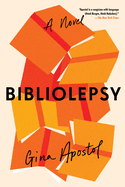
| Publisher: | Soho Press | |
| Genre: | Asia (General), World Literature, City Life, Political, Asian American, Fiction | |
| ISBN: | 9781641292511 | |
| Pub Date: | January 2022 | |
| Price: | $26 |
| Starred | Fiction |
by Gina Apostol
Bibliolepsy, Gina Apostol's debut novel originally published in the Philippines in 1997, is a whirlwind anti-coming-of-age story about a young woman's sexual obsessions in the wake of the Philippines' political upheaval in the early to mid-'80s. In Primi Peregrino's search for love and sex, she has always turned to books. Even now, after a revolution determined to overthrow dictator Ferdinand Marcos, Primi can't stop herself from pursuing sexual relationships with a variety of writers. While Primi burrows into a world of words and sex, she can't completely escape her fragmented family: her radical, spirit guide sister; her sharp-eyed uncle; and her grandmother, the woman who gave her the Karma Sutra before she could read and who took her in after her parents' mysterious death.
Apostol's (Gun Dealers' Daughter) breathless prose is full of torsion and rhapsodic pleasure, making the act of reading itself feel like an erotic workout. As the story unfolds, from Primi's parents' death at sea the year Marcos took control to the moment Marcos finally topples, her unusual sexual obsession with books and their authors seems sane compared to the people around her, who engage with the world via their own fantasy-fueled endeavors. The lead-up to the novel's climax captures the dizzying pleasure of finding a fixation amidst a fall, and the kaleidoscopic conclusion transcends reality. Apostol thrusts Primi into a jumble of surreal encounters before finally letting her break surface, leaving her, and readers, gasping for air. --Alice Martin, freelance writer and editor
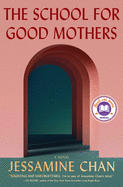
| Publisher: | Simon & Schuster | |
| Genre: | Women, Dystopian, Family Life, General, Literary, Fiction | |
| ISBN: | 9781982156121 | |
| Pub Date: | January 2022 | |
| Price: | $27 |
| Starred | Fiction |
by Jessamine Chan
In this entrancing debut novel, Jessamine Chan highlights the many societal assaults on new mothers, who are often held to an almost unflinching and unrealistic standard of perfection: "A mother is always kind. A mother is always giving. A mother never falls apart." The School for Good Mothers immerses readers in an immaculately constructed dystopian future that is even more spine-chilling because of its close roots to contemporary society.
The protagonist, Frida, is a recently divorced Chinese American new mother who, while exhausted and overwhelmed, leaves her daughter unattended for a few hours. This lapse in judgment is a mistake that will not be tolerated by the unforgiving people surrounding her--from her neighbors to those in the justice system--and her daughter is taken away by child protective services. Frida herself is sentenced to one year in a live-in retraining program.
What follows is the imaginative and heartrending story of a mother's fight to be reunited with her child. Frida is not perfect, and that makes her utterly sympathetic. Readers are also introduced to other women, each with her own tragic circumstances that draw attention to the inequities plaguing the legal system.
The speculative elements create a sense of ominousness that permeates the story, underscoring that, unless today's society finds ways to treat mothers with compassion and provide them with assistance, a similar future is only steps away. --Grace Rajendran, freelance reviewer and literary events producer
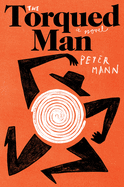
| Publisher: | Harper | |
| Genre: | Literary, Fiction, Historical, World War II | |
| ISBN: | 9780063072107 | |
| Pub Date: | January 2022 | |
| Price: | $26.99 |
| Fiction |
by Peter Mann
In Peter Mann's debut, The Torqued Man, two manuscripts intertwine in a twisty literary thriller where nothing is what it seems.
Adrian de Groot, a German military intelligence officer who despises the Nazis but is unable to find a way to avoid submitting to them, writes in his journal about recruiting an Irishman named Frank Pike, who has been released from imprisonment under Generalissimo Francisco Franco's regime in Spain for that purpose. De Groot's supervisors hope IRA fighter Pike can deliver Irish support for a joint attack against England. But their initial mission is aborted, and Pike remains in Berlin until a use can be found for him.
Pike's journals reveal a different story, in which he has been planted as a secret agent and, in the absence of more specific instructions, makes it his mission to eliminate Nazi doctors. The two narratives combine a morbidly dark comedy with an edge-of-your-seat suspense story. Only readers see both sides--but do even they know the truth? Fact and fiction intertwine, and if Pike's story contradicts the historical record, that may mean that his entire manuscript is invented, or merely that he stretched some facts or was mistaken about an individual incident.
The inner workings of the two narrators' minds, questions about the nature of truth and shocking twists will leave readers eager for more of Mann's work. --Kristen Allen-Vogel, information services librarian at Dayton Metro Library
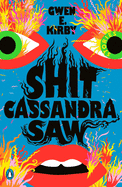
| Publisher: | Penguin Books | |
| Genre: | Short Stories (single author), Humorous, General, Literary, Fiction | |
| ISBN: | 9780143136620 | |
| Pub Date: | January 2022 | |
| Price: | $17 |
| Fiction |
by Gwen E. Kirby
An 1892 "emancipated duel" between two women is about to take place as the overseeing (female) doctor drolly remarks, "we will never be emancipated from the stupidity of men." That theme lingers throughout Gwen E. Kirby's remarkable 21-story debut, Shit Cassandra Saw, as women love, leave, disdain and suffer through centuries all manner of men--abusive, manipulative, definitely unintelligent, some even dead.
Kirby's (partially) titular opener, "Shit Cassandra Saw that She Didn't Tell the Trojans Because at that Point F%@& Them Anyway," brilliantly sets the collection's comically scathing tone: knowing the future leaves Cassandra of the unbelievable oracles "done, full the f%@& up, soul weary." If she could, she'd tell her fellow women about tampons, washing machines, mace, epidurals, but "the best thing of all" is the mighty Trojan legacy reduced to that little square package "carried in every hopeful wallet." That same uncomfortably dark-but-brilliant comedy carries into "A Few Normal Things that Happen a Lot," in which entitled men--whose careless catcalls easily morph into fatal violence--get their comeuppance when would-be victims develop superpowers that decimate male control.
Kirby writes with stunningly acerbic wit, whether she's empowering or exposing (or both) her diverse characters. From teens on the verge of adulthood, abandoned wives, cheating spouses, symbiotic sisters, Kirby creates familiar, identifiable girls and women, and places them in strikingly unexpected situations: conversing with an 18th-century ghost preacher, playing softball against a school where a shooting recently happened, obsessing over a stuffed (once-real) wallaby found in left luggage. Wielding humor and shock, Kirby audaciously unmasks gender disparity with delightful, disturbing aplomb. --Terry Hong, Smithsonian BookDragon
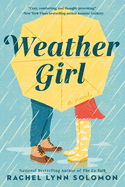
| Publisher: | Berkley | |
| Genre: | Women, Romance, Multicultural & Interracial, Workplace, Fiction | |
| ISBN: | 9780593200148 | |
| Pub Date: | January 2022 | |
| Price: | $16 |
| Romance |
by Rachel Lynn Solomon
Rachel Lynn Solomon (The Ex Talk; We Can't Keep Meeting Like This) has created a wonderfully heartfelt and hilarious romance in Weather Girl. Ari Abrams has longed to be a meteorologist since she was a little girl. So getting a job at the same Seattle television news station as Torrance Hale, a local weather legend, seemed to be a dream come true. But unfortunately for Ari, Torrance's ex-husband, Seth, is the station's news director, and their tumultuous relationship means the workplace environment is incredibly stressful.
Also affected by the tension is sweet, shy sports reporter Russell Barringer. Tired of Seth's passive-aggressive memos and Torrance's drama, Russell and Ari drunkenly decide at a holiday office party to make their bosses fall in love again, for the sake of the station. But as they bond over wacky schemes to throw Torrance and Seth together, Ari and Russell come to realize that they may also be falling for each other.
Lighthearted but with depth (characters deal with depression, fat-shaming, co-parenting and more), Weather Girl is a fantastic romance. Solomon has created lovely, enjoyable characters, and the laugh-out-loud matchmaking hijinks are a wonderful foil for the heavier themes the book explores. Descriptions of the Seattle area create a charming backdrop, making this an excellent choice for readers who like a little armchair traveling with their romance. Perfect for fans of Jasmine Guillory or Christina Lauren, Weather Girl will not disappoint. --Jessica Howard, bookseller at Bookmans, Flagstaff, Ariz.
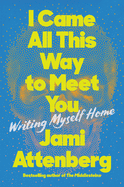
| Publisher: | Ecco | |
| Genre: | Biography & Autobiography, Women, Personal Memoirs, Writing, General, Language Arts & Disciplines | |
| ISBN: | 9780063039797 | |
| Pub Date: | January 2022 | |
| Price: | $27.99 |
| Biography & Memoir |
by Jami Attenberg
Novelist Jami Attenberg (All This Could Be Yours) displays her signature wit and sharp eye for detail in her memoir, I Came All This Way to Meet You. Readers of Attenberg's fiction will find familiar themes here: complicated family relationships, what it means to be a woman, the challenges of building a career one loves. Attenberg frames her book with travel metaphors ("The Long and Winding Runway," "Brief and Dire Spasms of Turbulence"), but her narrative also contains a lot of literal travel: endless solitary hours on the road during book tours, wandering dark Italian streets with a fellow writer, the traveling salesmen in Attenberg's family tree. She takes readers along on her physical and emotional journey as she wrestles with sexism, self-doubt, what it means to be a writer and the challenges of relationships (romantic, familial and otherwise).
Attenberg's peripatetic narrative offers a glimpse of various scenes in her life: her freewheeling 20s, her Midwestern childhood, her gradual stumbling toward the life and career she truly wants for herself. She takes physical risks but hesitates (for a while) to take emotional ones, and does her best to be honest about her own mistakes, foibles and questions. "The thing with being a novelist--or really any creative endeavor--is we have to willingly enter into the not knowing," she says. In Attenberg's hands, the "not knowing" is sometimes dark (and might be haunted)--but it also contains snark, red lipstick, glasses of wine and a patchwork of stalwart friends. --Katie Noah Gibson, blogger at Cakes, Tea and Dreams
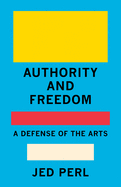
| Publisher: | Knopf | |
| Genre: | Art, Art & Politics, Criticism & Theory, Aesthetics, Philosophy | |
| ISBN: | 9780593320051 | |
| Pub Date: | January 2022 | |
| Price: | $20 |
| Art & Photography |
by Jed Perl
Jed Perl is too diplomatic to put it so bluntly, but he's had it up to here with the idea that the success of a work of art--a painting, a song, a play, a poem--should hinge on its messaging. Authority and Freedom: A Defense of the Arts is Perl's measured but emphatic case for art for art's sake, and a dissection of the long battle between the two abstract nouns that give his book its title.
Across six modest chapters, the author outlines the tension between an artist's hunger for total freedom and the pressure exerted on the artist to demonstrate an allegiance to authority, which Perl defines, paraphrasing philosopher Hannah Arendt, as "a hierarchy of values about which a group of people agree." Perl is generous with examples showing how this conflict has played out--with critics, with art lovers--across the generations. Of Picasso's 1937 masterwork, Perl writes, "Guernica is almost universally accepted as an indictment of humanity's inhumanity," and yet "for those who admired the mural, the key to its greatness was precisely Picasso's rejection of a journalistic or propagandistic approach."
A seasoned art critic and a biographer of Alexander Calder, Perl isn't remotely a dry or humorless writer, but Authority and Freedom will likely speak most clearly to those who have some grounding in art history or appreciation. Perl is adamant that art has no obligation other than to dazzle us, and his book is itself beautifully made, its ideas both authoritative and, intellectually speaking, freeing. --Nell Beram, author and freelance writer
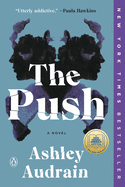
| Publisher: | Penguin Books | |
| Genre: | Women, Family Life, Domestic, General, Suspense, Thrillers, Fiction | |
| ISBN: | 9781984881687 | |
| Pub Date: | January 2022 | |
| Price: | $17 |
| Now in Paperback |
by Ashley Audrain
In this tense debut psychological thriller--a Good Morning America Book Club Pick and New York Times bestseller--a woman is tormented by the question of whether she is facing the normal struggles of new motherhood, or if there is something wrong with her daughter.
Blythe Connor was never confident that she had what it took to be a good mother; the women in her family have a history of being poorly suited for the role. When her daughter, Violet, is born, she is plagued with doubts. Is she failing in some way, unsuited to the challenges that the rest of the mothers she knows handle easily, or is Violet different from other children? Her husband doesn't see it, and Blythe wonders about her own sanity. Her second child, Sam, is born and motherhood comes far more easily. Then tragedy strikes, and the family unravels as Blythe struggles to understand what happened.
The Push by Ashley Audrain is claustrophobically narrated by Blythe, addressed to her husband, keeping readers wondering about how trustworthy her perspective is. With only Blythe's observations, often refuted by her husband and minimized by other women, the question hangs over every page: Is what Blythe thinks she sees the effect of postpartum depression compounded by grief, or is Violet dangerous? Blythe's family history becomes clearer and her own behavior becomes more unbalanced as the story progresses. Until the breathtaking final page, readers will question whether they are witnessing the fallout of a tragic accident or something far more twisted. --Kristen Allen-Vogel, information services librarian at Dayton Metro Library
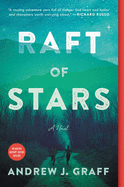
| Publisher: | Ecco | |
| Genre: | Small Town & Rural, Literary, Coming of Age, Fiction | |
| ISBN: | 9780063031913 | |
| Pub Date: | January 2022 | |
| Price: | $16.99 |
| Now in Paperback |
by Andrew J. Graff
Andrew J. Graff's debut, Raft of Stars, is a magnificent saga of friendship, loss and heroism, wrapped in the fallout of war and action, that recalls adventure stories of old. In 1994 Claypot, Wis., 10-year-old best friends Fischer "Fish" Branson and Dale "Bread" Breadwin tear around town on their Huffys and roam the Northwoods, exploring and escaping their respective sorrows. Fish is mourning his military father's death, which precipitates his summer visits to Claypot, to his maternal grandfather, Teddy Branson, widower and Korean War veteran. Bread's father is an abusive drunk they avoid at all costs.
At the local gas mart, Tiffany works the counter, staving off homelessness, bantering with the locals and trying to catch the attention of Sheriff Cal. Cal is new to town, up from Houston where his confrontation with a violent parolee made a fresh start necessary. After Fish shoots Bread's father to stop another beating, the boys pack supplies, leave a note for Teddy and run away to build a raft and live off the land. The life-battered locals join with Fish's stalwart mother, Miranda, in a frantic search for the boys in the Wisconsin wilderness.
As the pairs (Fish and Bread, Teddy and Cal, Tiffany and Miranda) converge at the perilous gorge rapids the boys don't know exist, they learn about themselves, each other and the things that are most important. Graff's nature writing is absorbing, and his characters generate a yearning to know them. Raft of Stars is a quest story full of heart and humor. --Lauren O'Brien of Malcolm Avenue Review
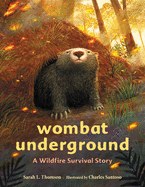
| Publisher: | Little, Brown Books for Young Readers | |
| Genre: | Survival Stories, Animals, People & Places, Disasters, Australia & Oceania, Environment, Science & Nature, Mammals, Juvenile Fiction, Action & Adventure | |
| ISBN: | 9780316707060 | |
| Pub Date: | January 2022 | |
| Price: | $18.99 |
| Starred | Children's & Young Adult |
by Sarah L. Thomson, illust. by Charles Santoso
In the empathic and edifying Wombat Underground, written by prolific fiction and nonfiction author Sarah L. Thomson and illustrated by Charles Santoso (I Don't Like Koala; The Bookstore Cat), the eponymous marsupial proves to be a hero by opening his cozy home to other animals in need of sanctuary.
A lightning strike and dry conditions cause a terrible wildfire to burn through the Australian bush. "Flakes of fire sail on the wind. Ribbons of smoke snake through the grass. Fingers of flame claw up each tree." What will happen to the animals? Skink, Echidna and Wallaby, her young one tucked in her pouch, flee from the fire. They find a hole in a hill--Wombat's hole--and try to gain entry. Wombat, who initially blocks the entrance, finally realizes that his home is large enough to share: "There is room for one more, for two more, for three.../ room for us all deep in the dirt under the hill."
Thomson's dramatic, terse language quickly communicates the serious situation. Santoso's digital illustrations are striking and tense, making the life-or-death situation the animals face painfully clear. The reds and yellows of the fire and the dry Australian bush contrast with the rich, wet brown soil of Wombat's underground home. Wombat Underground will likely engender discussion about animals in such precarious situations, but also about how people can protect others (human and animal) in times of danger. The author's note is particularly helpful in this picture book--it enhances the story with facts about bushfires and the Australian animals affected by their annual occurrence, as well as discussion of the 2019-2020 fire season and how global climate changes affect us all. --Melinda Greenblatt, freelance book reviewer
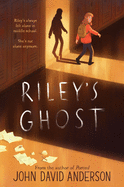
| Publisher: | Walden Pond Press | |
| Genre: | Friendship, School & Education, Ghost Stories, Social Themes, New Experience, Juvenile Fiction | |
| ISBN: | 9780062985972 | |
| Pub Date: | January 2022 | |
| Price: | $16.99 |
| Children's & Young Adult |
by John David Anderson
Middle school turns into a real-time horror story for one lonely girl in this dark yet ultimately hopeful middle-grade novel.
Watching her middle-school peers "stumble through each other's hormonal fogs" is bad enough for seventh-grader Riley Flynn. But going it alone ever since her best friend Emily ditched her at the end of sixth grade is enough to make her lonely, depressed and so angry she occasionally acts out. When one evening a "band of vindictive volleyballers"--including Emily--lock her in the science room supply closet with half-dissected frogs, Riley knows there is no one in the world who will come to her rescue, including her parents, who are both working. Horrifying though her situation is, she couldn't anticipate how much worse it would get when not one, but two ghosts with unresolved business show up. Max, in the form of a "half-eviscerated zombie frog," promises he doesn't want to hurt her. But Heather? The long-dead former middle-schooler who, like Riley, was bullied and abandoned by friends? Riley's not so sure of her intentions.
John David Anderson (Posted; Ms. Bixby's Last Day) spins a spine-tingling ghost story that captures the sadness and loss of being left behind, for the living as well as the dead. Movie-worthy scenes in the dark school halls alternate with chapters about Riley's struggles to control her impulses and, in a word, survive middle school. Creepy ghosts or not, middle school is no picnic for many kids; Riley's Ghost might make them feel seen. --Emilie Coulter, freelance writer and editor
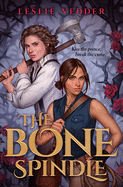
| Publisher: | Razorbill | |
| Genre: | Adaptations, Romance, Young Adult Fiction, Action & Adventure, Fairy Tales & Folklore, LGBTQ+ | |
| ISBN: | 9780593325827 | |
| Pub Date: | January 2022 | |
| Price: | $18.99 |
| Children's & Young Adult |
by Leslie Vedder
Leslie Vedder's YA fantasy, The Bone Spindle, is an energetic and adventurous genderbent retelling of "Sleeping Beauty" with a powerful female friendship at its core.
A century ago, Prince Briar Rose of Andar was "cast... into a deathless sleep" to escape a curse placed upon him by the villainous Spindle Witch. Treasure hunter Fi is exploring a ruin in the nearby kingdom of Darfell when she pricks her finger on a bone spindle, a sign that she is "destined to wake Briar Rose" with a kiss and free Andar from the Spindle Witch. Fi and her partner Shane, a mercenary "well-known for her aggressive brand of justice," set out on a quest to "pass through the Forest of Thorns, enter the sleeping castle" and wake the prince.
Vedder weaves elements of "Sleeping Beauty" into an inventive quest narrative that places teenage girls--who are often marginalized and victimized in fairy tales--in positions of importance. The Bone Spindle alternates points of view between reserved, bookish Fi (who has "warm tan skin") and impulsive, axe-wielding Shane (who has "fair skin"), who are distinct individuals who share entertaining and humorous back-and-forth exchanges. Their reluctant partnership's transformation into a genuine friendship is a highlight of Vedder's debut. Fi's developing feelings for the blue-eyed, golden-haired Briar Rose--despite her resolution to "keep [her] heart out of it"--and Shane's flirtation with a mysterious witch known as Red add elements of romantic tension. Vedder raises questions of free will versus fate as Fi and Shane face the weight of their heroic destinies while also attempting to forge their own paths. --Alanna Felton, freelance reviewer